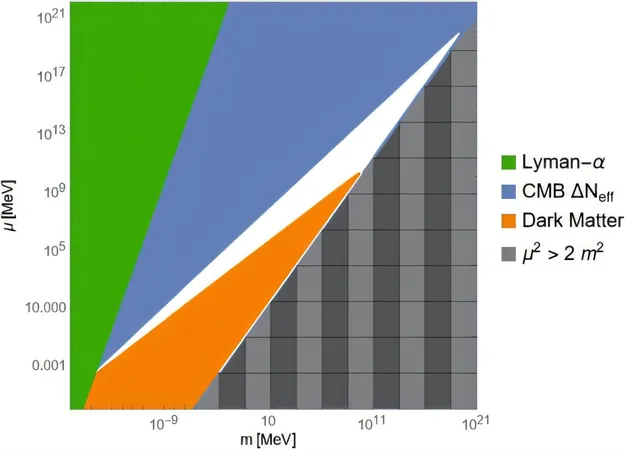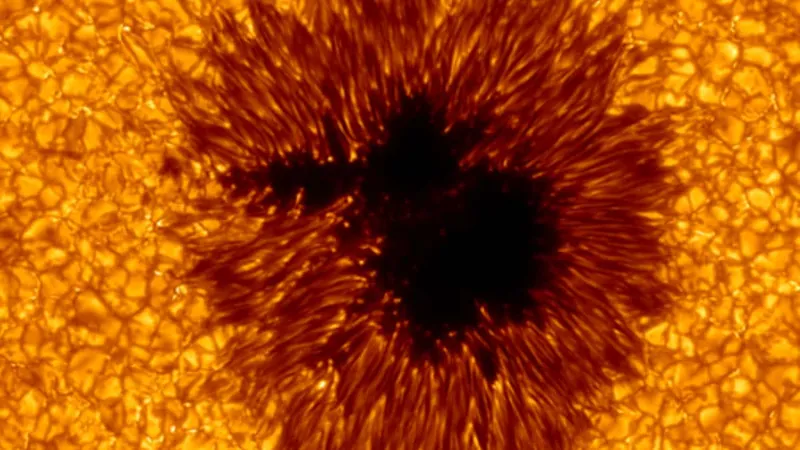
Shocking Possibilities: Are We Witnessing the Birth of Dark Matter's Past?
2024-11-18
Author: Michael
A groundbreaking new study out of Colgate University has opened the door to revolutionary insights about the origins of dark matter, a puzzle that has long baffled physicists and astronomers alike. This collaborative research led by Assistant Professor Cosmin Ilie and student Richard Casey delves into tantalizing theories proposed by Katherine Freese and Martin Winkler from the University of Texas at Austin, suggesting that dark matter might have emerged from an entirely distinct event—a “Dark Big Bang”—unfolding shortly after the conventional Big Bang.
For decades, scientists have accepted that everything in our universe, including the elusive dark matter, stemmed from a singular, monumental event: the Big Bang. This cataclysm marked the end of cosmic inflation, wherein a massive amount of vacuum energy transitioned into a hot, dense plasma of radiation and particles. Yet, the true nature of dark matter—responsible for around 25% of the universe's energy composition—remains shrouded in mystery. While its existence is inferred through gravitational effects on visible matter, it has not been directly detected, prompting researchers to seek alternative explanations.
In a fascinating twist, Freese and Winkler proposed in 2023 that dark matter could have originated from a different Big Bang roughly months after the initial explosion, diverging from the conventional conception of cosmic evolution. This hypothesis revolves around the idea that dark matter particles arise from the decay of an exotic quantum field, isolated in what’s known as a false metastable vacuum state.
In their recent paper published in *Physical Review D*, Ilie and Casey take this idea further by meticulously exploring various scenarios aligned with our current understanding of experimental data. Their study unveils a broad spectrum of potential parameters that could elucidate the beginnings of dark matter. Importantly, they also highlight the prospect of gravitational waves, which might emerge as a significant byproduct of this hypothetical Dark Big Bang, potentially offering a novel way to test the theory.
“Detecting gravitational waves generated by a Dark Big Bang could serve as pivotal evidence for this innovative perspective on dark matter,” stated Ilie. With new experimental technologies like the International Pulsar Timing Array (IPTA) and the Square Kilometer Array (SKA) on the horizon, we are nearing the capability to investigate these ideas at unprecedented levels of accuracy.
The 2023 detection of background gravitational waves by the NANOGrav collaboration, part of IPTA, may already hint at phenomena connected to the Dark Big Bang concept. As future experimental undertakings yield more precise data, the research from Ilie and Casey could refine our understanding of the parameters shaping dark matter's origins and perhaps validate it as the true source of dark matter.
The implications of these revelations reach far beyond just dark matter. They provide an unprecedented lens through which to view the early universe, unraveling the intricate forces that sculpted its evolution. As the quest for understanding dark matter and its enigmatic origins continues, the potential discoveries could reshape our grasp of the cosmos itself, promising a thrilling frontier in modern cosmology.
Stay tuned, as the scientific community eagerly awaits further evidence that could change everything we know about the universe!









 Brasil (PT)
Brasil (PT)
 Canada (EN)
Canada (EN)
 Chile (ES)
Chile (ES)
 España (ES)
España (ES)
 France (FR)
France (FR)
 Hong Kong (EN)
Hong Kong (EN)
 Italia (IT)
Italia (IT)
 日本 (JA)
日本 (JA)
 Magyarország (HU)
Magyarország (HU)
 Norge (NO)
Norge (NO)
 Polska (PL)
Polska (PL)
 Schweiz (DE)
Schweiz (DE)
 Singapore (EN)
Singapore (EN)
 Sverige (SV)
Sverige (SV)
 Suomi (FI)
Suomi (FI)
 Türkiye (TR)
Türkiye (TR)